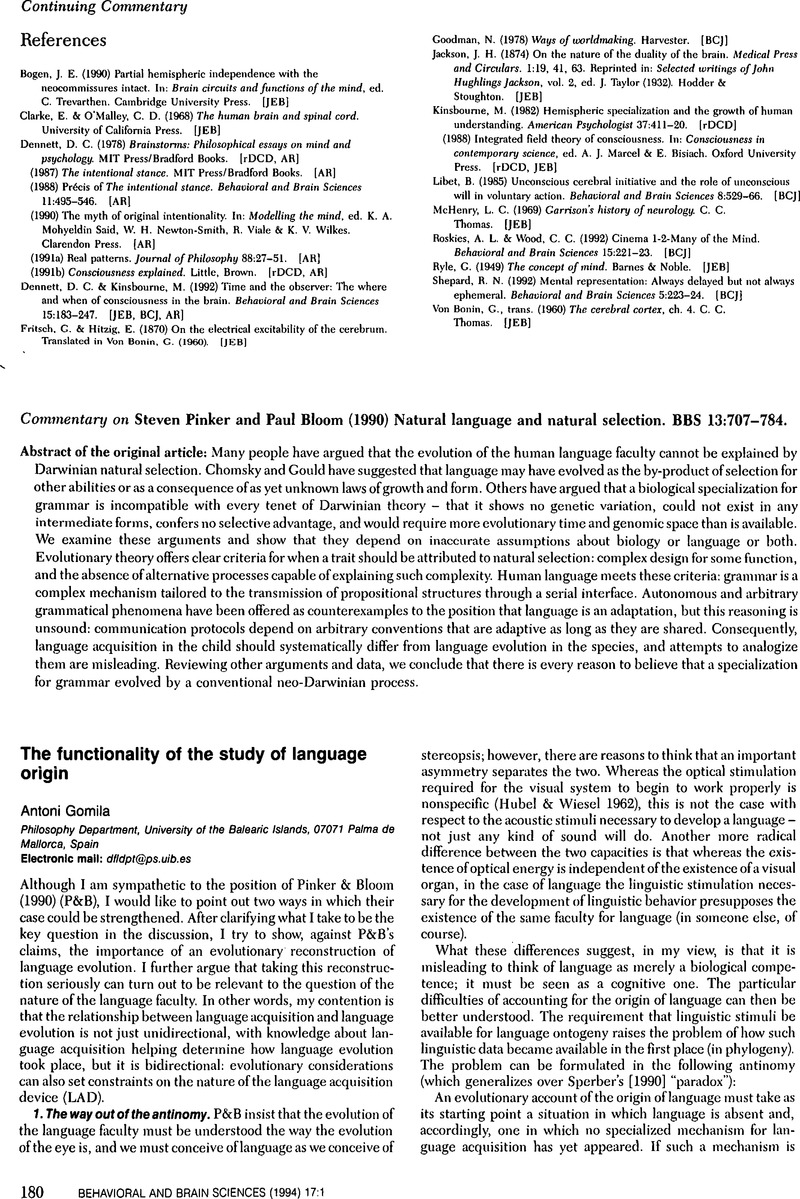Crossref Citations
This article has been cited by the following publications. This list is generated based on data provided by Crossref.
Brancazio, Lawrence
and
Fowler, Carol A.
1998.
On the relevance of locus equations for production and perception of stop consonants.
Perception & Psychophysics,
Vol. 60,
Issue. 1,
p.
24.
Baker, Mark C.
2003.
Linguistic differences and language design.
Trends in Cognitive Sciences,
Vol. 7,
Issue. 8,
p.
349.
Scholl, Brian J.
2005.
The Innate Mind.
p.
34.
Crain, Stephen
Gualmini, Andrea
and
Pietroski, Paul
2005.
The Innate Mind.
p.
175.
Baker, Mark C.
2005.
The Innate Mind.
p.
156.
Gelman, Susan A.
2005.
The Innate Mind.
p.
198.
Sperber, Dan
2005.
The Innate Mind.
p.
53.
Johnson, Susan C.
2005.
The Innate Mind.
p.
254.
Carruthers, Peter
2005.
The Innate Mind.
p.
69.
Greene, Joshua
2005.
The Innate Mind.
p.
338.
2005.
The Innate Mind.
p.
v.
Simpson, Tom
2005.
The Innate Mind.
p.
122.
Shusterman, Anna
and
Spelke, Elizabeth
2005.
The Innate Mind.
p.
89.
Simpson, Tom
Carruthers, Peter
Laurence, Stephen
and
Stich, Stephen
2005.
The Innate Mind.
p.
3.
Carruthers, Peter
Laurence, Stephen
and
Stich, Stephen
2005.
The Innate Mind.
Marcus, Gary F.
2005.
The Innate Mind.
p.
23.
Tager‐Flusberg, Helen
2005.
The Innate Mind.
p.
272.
Atran, Scott
2005.
The Innate Mind.
p.
141.
Povinelli, Daniel J.
Prince, Christopher G.
and
Preuss, Todd M.
2005.
The Innate Mind.
p.
239.
Duntley, Joshua D.
and
Buss, David M.
2005.
The Innate Mind.
p.
291.



